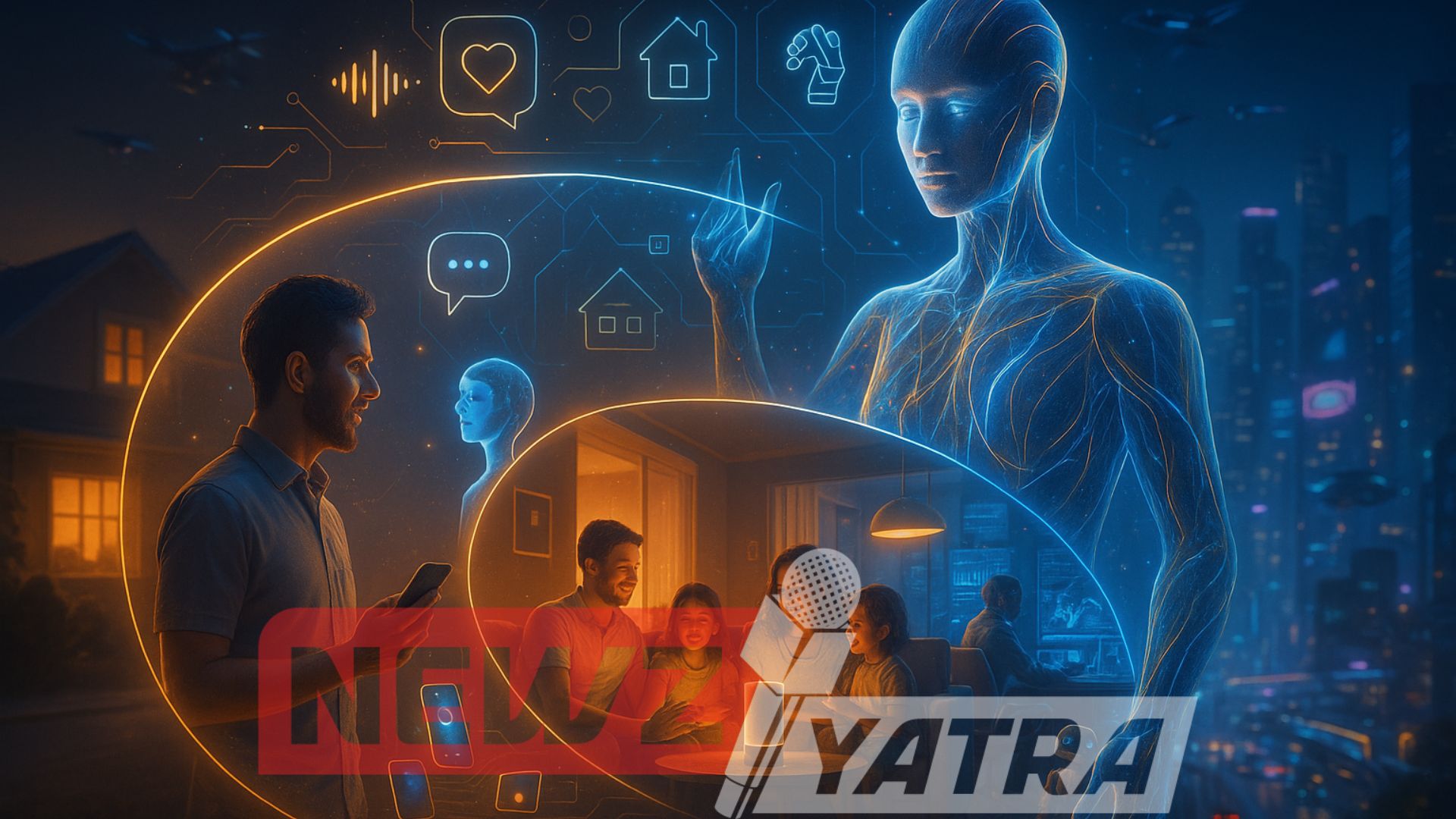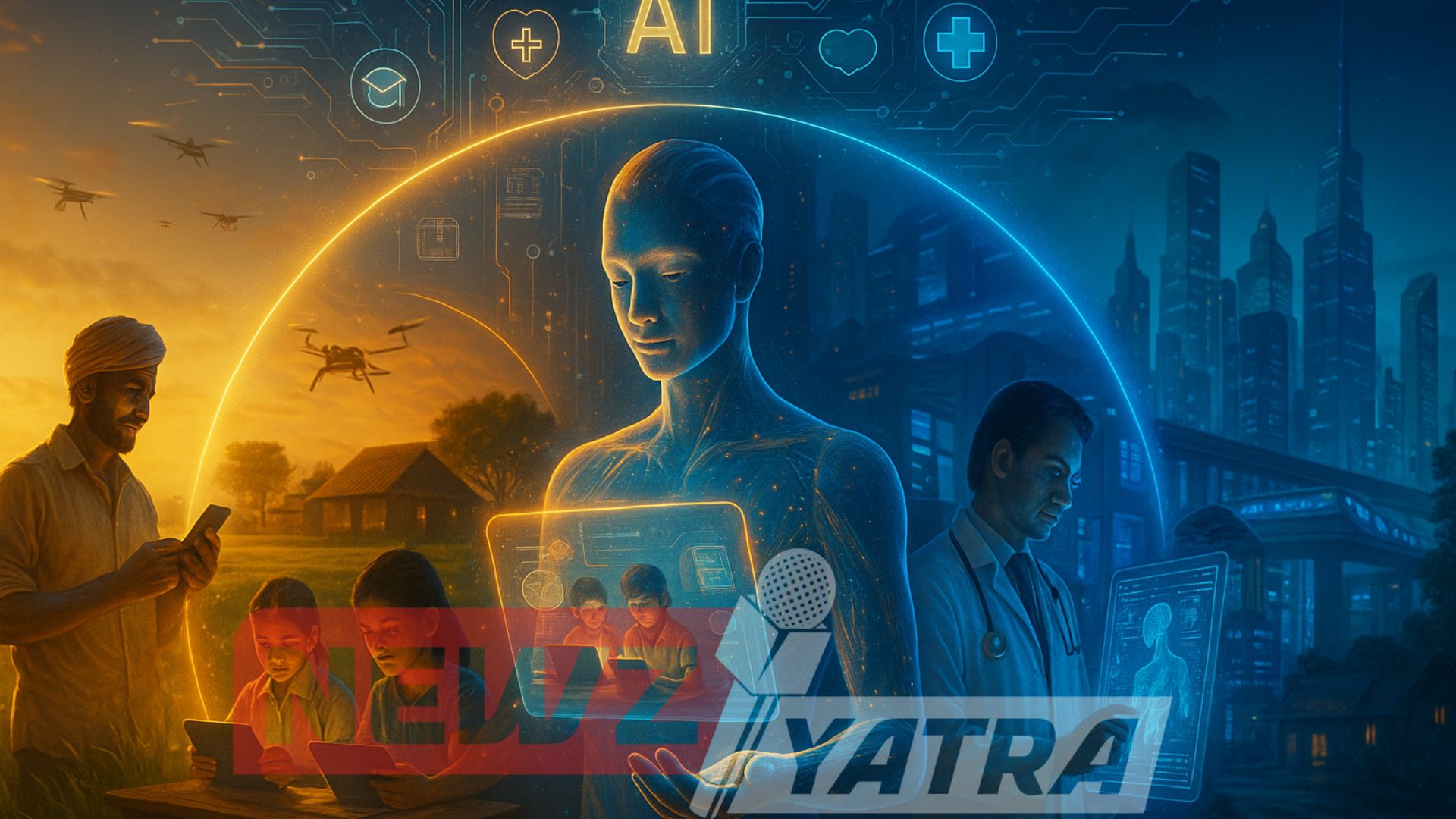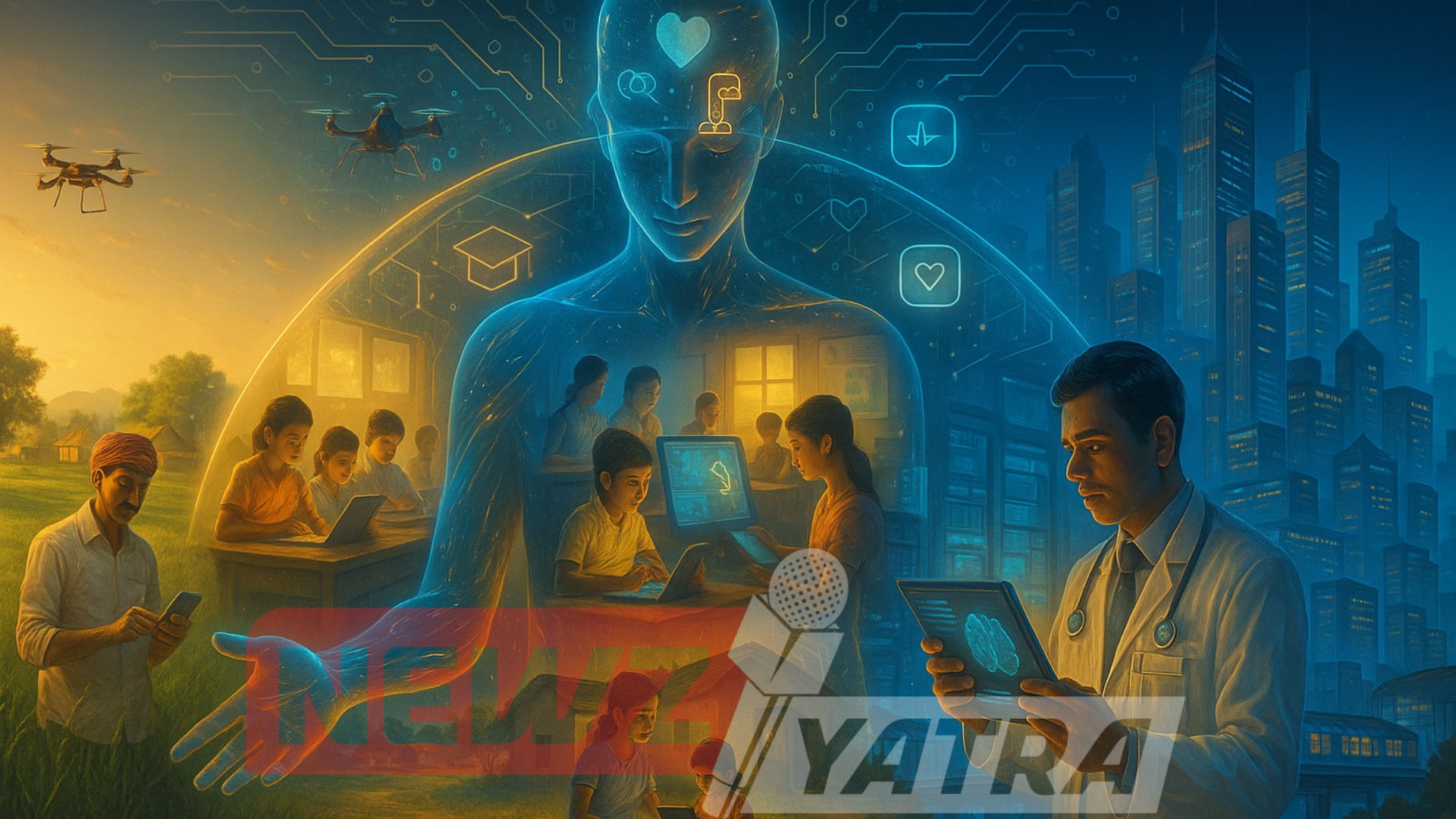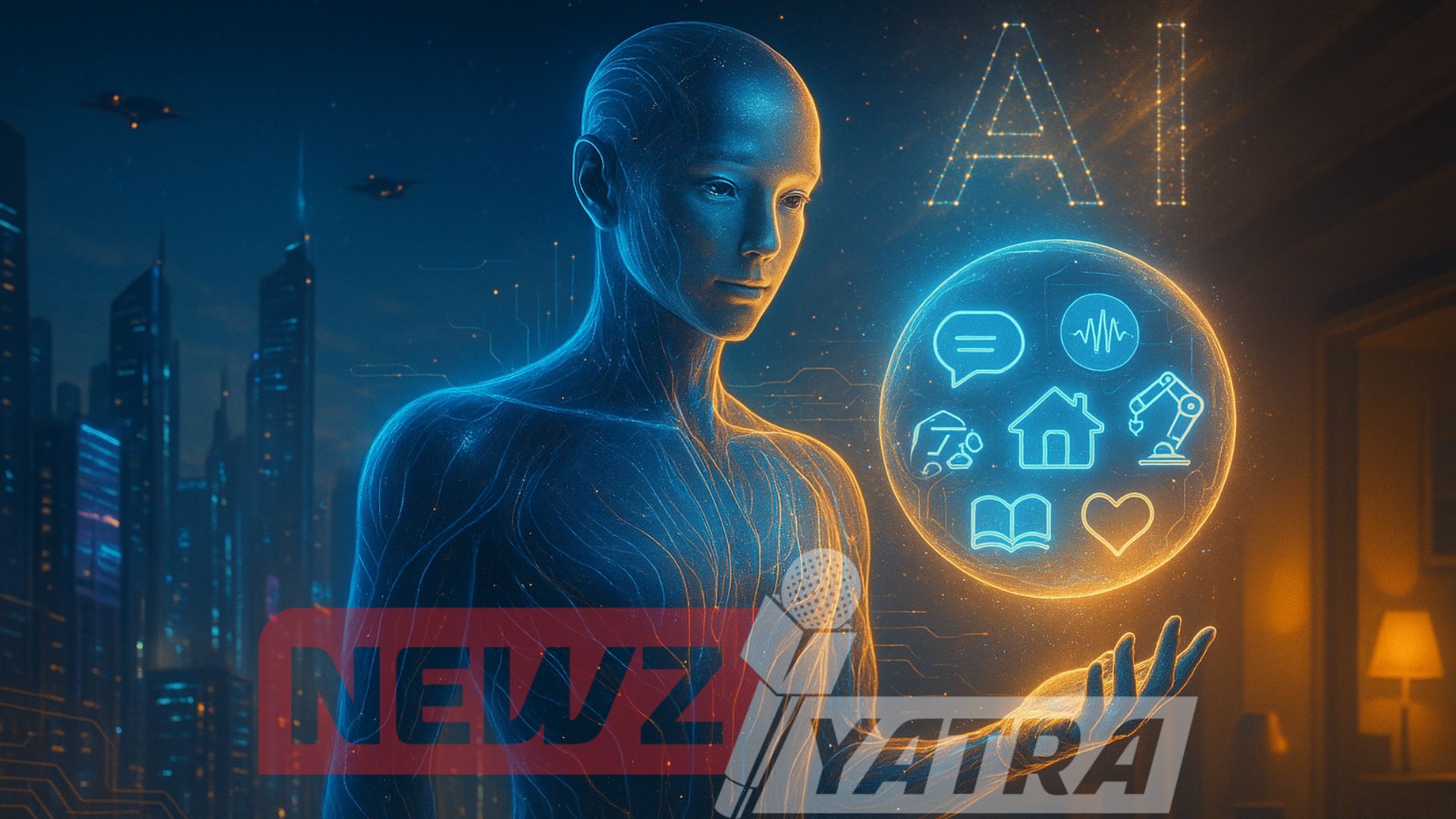How AI is Transforming Business Growth in 2025!
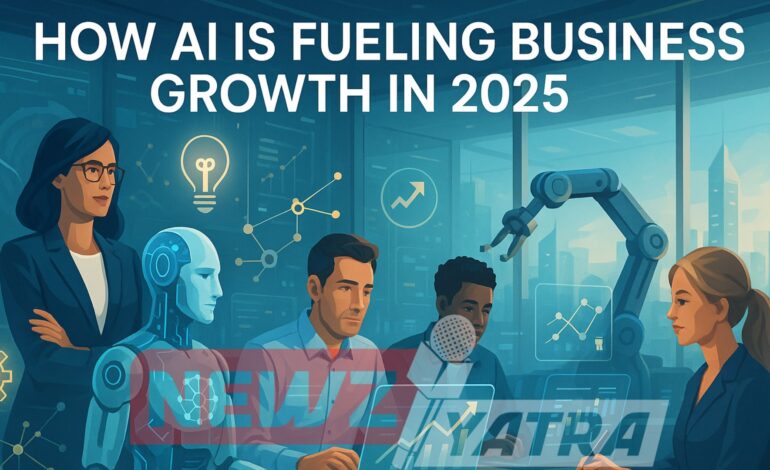
How AI Is Fueling Business Growth in 2025: Trends, Tools & Real-World Impact
In 2025, artificial intelligence (AI) is no longer just a buzzword — it’s a mission-critical asset reshaping the global business landscape. Across industries, companies are embedding AI into their operations to unlock efficiencies, drive smarter decision-making, enhance customer experiences, and accelerate innovation.
From predictive analytics and intelligent automation to generative AI and autonomous systems, organizations are leveraging AI to gain a competitive edge. Businesses of all sizes — from nimble startups to Fortune 500 giants — are using AI to anticipate market shifts, personalize offerings, optimize supply chains, and even develop new products faster than ever before. (AI in business growth 2025)
In this blog, we’ll dive into the most impactful ways AI is fueling business growth in 2025, including:
- Real-world examples of companies using AI to improve performance and profitability
- Emerging trends shaping the future of AI in business, from AI copilots to hyperautomation
- Key tools and platforms that are leading the way in enterprise AI adoption
Whether you’re a business leader, tech strategist, or innovator, understanding how to harness the power of AI is essential to staying ahead in today’s dynamic, data-driven world. (AI in business growth 2025)
The AI Advantage: 7 Game-Changing Business Applications in 2025! (AI in business growth 2025)
1. Smarter Decision-Making with AI-Powered Analytics (AI in business growth 2025)
In 2025, businesses are generating more data than ever before — from customer interactions and market activity to supply chain operations and social media signals. While this data deluge can be overwhelming, AI-powered analytics are turning it into a strategic asset. Advanced platforms like Google Cloud AI, IBM Watson, and Microsoft Azure AI are equipping organizations with the tools to extract actionable insights in real time.
these tools analyze vast datasets to uncover hidden patterns, detect anomalies, and predict key outcomes such as customer churn, lifetime value, and product demand. For example, leading retailers are leveraging AI-driven forecasting to better anticipate customer demand, enabling them to reduce stockouts and avoid overstocking. This not only enhances customer satisfaction but also cuts millions in unnecessary supply chain and inventory costs. By transforming raw data into foresight, AI is empowering smarter, faster, and more confident business decisions across industries.
2. Automating Complex Tasks with AI (AI in business growth 2025)
In 2025, automation has evolved far beyond the factory floor. With the rise of AI-driven tools, businesses are now automating complex, repetitive tasks across a wide range of departments — saving time, reducing errors, and boosting productivity. In customer support, AI chatbots like ChatGPT and Intercom are handling routine inquiries around the clock, improving response times and freeing up human agents for more personalized service.
In finance, platforms like Vic.ai are automating accounting and invoicing processes, minimizing manual data entry and speeding up approvals. In HR, tools like HireVue and Paradox are streamlining recruiting by screening candidates, scheduling interviews, and even conducting initial assessments. This kind of end-to-end automation is enabling companies to cut down on manual work, increase operational efficiency, and allow teams to focus on higher-value, strategic tasks that drive business growth.
3. Personalized Marketing and Smarter Sales with AI(AI in business growth 2025)
In 2025, AI is revolutionizing how businesses connect with their customers, making marketing and sales more personalized, data-driven, and effective. Tools like HubSpot AI, Adobe Sensei, and Jasper AI empower marketers to tailor website content, email campaigns, and advertisements to individual customer preferences and behaviors.
These platforms enable predictive lead scoring, helping sales teams prioritize the most promising prospects, while also providing real-time insights into campaign performance for quick optimization. For example, an eCommerce brand can use AI to recommend personalized products based on browsing and purchase history — a strategy that has boosted average order values by up to 35%. By delivering the right message to the right person at the right time, AI is helping businesses drive higher engagement, conversion rates, and customer loyalty.
4. Better Customer Experiences with AI Assistants (AI in business growth 2025)
In 2025, AI is playing a pivotal role in transforming customer service by making it faster, more intelligent, and more personalized. AI chatbots are now capable of handling over 80% of routine support tickets, providing instant, accurate responses that reduce wait times and free up human agents for complex issues. Voice assistants like Alexa for Business are enhancing workplace interactions by streamlining meeting scheduling, answering queries, and managing tasks hands-free.
Meanwhile, sentiment analysis tools monitor customer interactions in real time to detect frustration or dissatisfaction, allowing companies to intervene proactively before issues escalate. The result is a smoother, more responsive support experience that drives higher customer satisfaction, loyalty, and retention — all of which are essential for sustainable business growth in today’s competitive landscape.
5. Real-Time Forecasting and Strategic Planning (AI in business growth 2025)
In 2025, AI is giving business leaders a powerful edge through real-time forecasting and intelligent scenario modeling. Executives are using AI tools to accurately predict revenue growth, anticipate market shifts, and assess operational risks — often weeks or months in advance. This enables companies to make more informed, proactive decisions and quickly adapt to changing conditions.
For example, a logistics company can now use AI to simulate how variables like weather patterns, traffic congestion, and fuel prices will impact delivery times and profit margins. With this foresight, they can adjust routes, pricing, or staffing ahead of time, improving efficiency and profitability. By integrating AI into strategic planning, businesses gain the agility to respond to opportunities and threats faster than competitors, setting themselves up for long-term success.
6. Improved Risk Management and Fraud Detection (AI in business growth 2025)
In 2025, AI has become a critical line of defense for businesses looking to manage risk and combat fraud in real time. Financial institutions, insurers, and online platforms are using advanced AI systems to detect suspicious patterns, assess credit risk more accurately, and flag anomalies before they escalate into major threats. Tools like Darktrace, which specializes in cybersecurity, and DataVisor, focused on fraud detection, are empowering companies to monitor vast amounts of data continuously and respond to threats instantly.
These AI-driven solutions can identify subtle indicators of fraud that traditional systems often miss — such as unusual login behavior or transactional patterns — allowing organizations to take preventive action. As a result, companies are saving millions in potential losses while safeguarding customer data and protecting brand trust in an increasingly digital and high-risk environment.
7. Democratization of Innovation through No-Code AI (AI in business growth 2025)
In 2025, AI development is no longer confined to technical experts — thanks to the rise of no-code AI platforms, innovation is now accessible to everyone. Tools like ChatGPT for Business, Runway ML, and Peltarion are empowering non-technical teams to build AI-powered solutions, run machine learning models, and analyze data without writing a single line of code. Marketing teams can generate content, HR teams can automate candidate screening, and product managers can prototype AI features — all independently of engineering support.
This democratization of AI is accelerating experimentation, reducing development cycles, and fostering a culture of innovation across both startups and large enterprises. By putting powerful AI tools into the hands of more people, businesses are unlocking new ideas and driving value faster than ever before.

Looking Ahead: What’s Next for AI in Business? (AI in business growth 2025)
As we move beyond 2025, artificial intelligence is poised to unlock even greater potential for businesses worldwide. While today’s AI applications are already transforming decision-making, automation, and customer experience, the next wave of innovation will be even more disruptive. Here are three key frontiers shaping the future of AI in business:
1. AI + IoT Integration for Smarter Operations (AI in business growth 2025)
The convergence of artificial intelligence with the Internet of Things (IoT) is driving the rise of intelligent, self-optimizing systems across industries. In manufacturing, smart factories are using AI to analyze real-time data from IoT sensors — enabling predictive maintenance, dynamic quality control, and energy optimization. Logistics providers are equipping fleets with AI-driven IoT devices to monitor vehicle health, optimize delivery routes, and reduce emissions in real time.
This tight integration allows businesses to:
- Respond instantly to operational anomalies
- Improve asset utilization and uptime
- Lower operational costs while boosting output
Platforms like Siemens MindSphere, GE Predix, and Azure IoT Edge are already powering these AI+IoT ecosystems. As 5G networks expand and edge computing becomes more accessible, these intelligent networks will become the new backbone of industrial efficiency.
2. Autonomous AI Agents for Business Execution (AI in business growth 2025)
Next-gen AI systems are moving beyond assistance to autonomous execution. In 2025 and beyond, we’ll see the rise of AI agents that can perform multi-step tasks with minimal or no human intervention. These agents are capable of goal-setting, decision-making, and adapting in dynamic environments — a leap forward from today’s rule-based automation.
For example:
- In finance, autonomous agents may monitor markets and automatically rebalance portfolios.
- In customer service, they can resolve tickets end-to-end across channels.
- In procurement, AI agents could negotiate with suppliers, compare vendor performance, and complete orders.
Technologies like Auto-GPT, OpenAI Codex, and LangChain are early examples of frameworks enabling this kind of task automation. As these agents become more reliable and secure, businesses will be able to delegate entire workflows — not just individual tasks — to AI.
3. Generative AI for Creativity and Product Innovation (AI in business growth 2025)
Generative AI is already making waves in content creation, and its business applications will continue to expand. Tools like ChatGPT, Runway ML, Midjourney, and Synthesia are helping companies generate marketing copy, social media visuals, product mockups, and training videos in minutes.
Looking forward, generative AI will be deeply embedded in:
- Product design — generating prototypes and iterating on customer feedback faster
- Software development — writing, debugging, and testing code more efficiently
- Customer engagement — enabling hyper-personalized interactions at scale through dynamic content generation
These tools won’t just accelerate content creation — they’ll unlock new creative possibilities, lower development costs, and dramatically reduce time-to-market.
How to Monetize Your Skills in 2025 — Even Without a Degree!
Human-AI Collaboration: Augmenting, Not Replacing (AI in business growth 2025)
As we move deeper into 2025, a new narrative around AI is taking center stage — not one of replacement, but of augmentation. While early fears painted AI as a threat to human jobs, the reality playing out across industries is far more nuanced and promising: humans and AI working together are more powerful than either working alone.
Rather than displacing employees, the most impactful AI tools today are enhancing human capabilities, enabling professionals to work smarter, faster, and more creatively. This paradigm shift — often referred to as “human-in-the-loop” AI — is driving new levels of productivity, collaboration, and innovation across every domain.
Benefits of Human-AI Teaming Across Industries (AI in business growth 2025)
Human-AI collaboration is delivering tangible benefits across sectors, unlocking new value in ways that neither humans nor machines could achieve alone.
Customer Service (AI in business growth 2025)
AI chatbots handle routine queries and surface customer insights, while human agents manage complex emotional interactions or escalations. This synergy leads to faster response times, improved satisfaction scores, and more personalized service.
Healthcare (AI in business growth 2025)
AI helps doctors analyze medical imaging, flag early warning signs, and suggest personalized treatment plans. Physicians retain final decision-making authority, but the AI offers a second set of eyes — improving diagnosis accuracy and reducing oversight.
Creative Industries (AI in business growth 2025)
Writers, designers, and marketers are using AI tools like ChatGPT, Midjourney, Runway ML, and Adobe Firefly to brainstorm ideas, generate visuals, and automate production. This allows creatives to spend more time iterating on quality and less time on repetitive tasks.
How to Boost Your iPhone’s Battery Life Without Replacing It
New Skill Sets in the Age of AI Augmentation (AI in business growth 2025)
As AI becomes a standard collaborator, the most valuable professionals are those who know how to work with AI effectively. This shift is giving rise to new, hybrid skill sets that blend domain expertise with technological fluency.
Emerging competencies include: (AI in business growth 2025)
- Prompt engineering: Knowing how to ask the right questions or provide effective instructions to AI systems.
- Critical evaluation of AI outputs: Understanding when AI is wrong, biased, or requires human judgment.
- AI-enhanced creativity: Using generative tools as a springboard for ideation or iteration.
- Data literacy: Interpreting insights from AI analytics tools and making decisions based on them.
- Agile thinking: Rapidly adapting workflows in response to AI-augmented processes or new technologies.
Companies that invest in AI upskilling are seeing a direct return — both in employee retention and in innovation output. Many forward-thinking organizations are embedding AI literacy training into onboarding and ongoing education programs to prepare employees for this collaborative future.
The Future Isn’t Human or AI — It’s Human with AI (AI in business growth 2025)
As we stand on the edge of a new business era, it’s clear: AI is no longer an optional upgrade — it’s a strategic imperative. From turbocharging productivity and enhancing customer experiences to sparking creative breakthroughs and enabling real-time decision-making, AI is driving a fundamental shift in how businesses operate, compete, and grow in 2025.
But the most transformative force isn’t AI alone — it’s the collaboration between human insight and machine intelligence. The businesses that will lead the future are not those that simply adopt AI, but those that empower their people to harness it — blending logic with intuition, data with empathy, and speed with vision. (AI in business growth 2025)
In this new age, success belongs to the organizations that treat AI not as a replacement, but as a co-creator, co-strategist, and co-pilot.
Ready to Lead the Future with AI? (AI in business growth 2025)
Whether you’re a startup founder, enterprise executive, or innovation lead, now is the time to rethink what’s possible. Start integrating AI into your workflows, upskill your teams, and build a culture that thrives on human-AI collaboration.
Embrace the AI revolution — not just to keep up, but to leap ahead. (AI in business growth 2025)
👉 Need help identifying the right AI tools or building your augmentation strategy? Let’s talk.
How to Make Passive Income in 2025 Without Quitting Your Day Job
